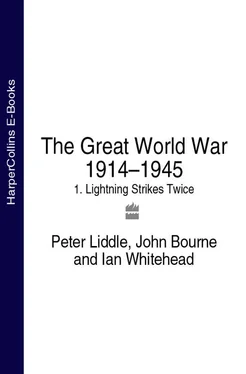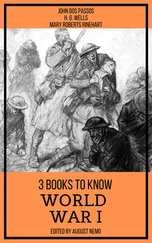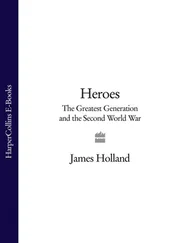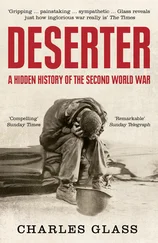John Bourne - The Great World War 1914–1945 - 1. Lightning Strikes Twice
Здесь есть возможность читать онлайн «John Bourne - The Great World War 1914–1945 - 1. Lightning Strikes Twice» — ознакомительный отрывок электронной книги совершенно бесплатно, а после прочтения отрывка купить полную версию. В некоторых случаях можно слушать аудио, скачать через торрент в формате fb2 и присутствует краткое содержание. Жанр: unrecognised, на английском языке. Описание произведения, (предисловие) а так же отзывы посетителей доступны на портале библиотеки ЛибКат.
- Название:The Great World War 1914–1945: 1. Lightning Strikes Twice
- Автор:
- Жанр:
- Год:неизвестен
- ISBN:нет данных
- Рейтинг книги:4 / 5. Голосов: 1
-
Избранное:Добавить в избранное
- Отзывы:
-
Ваша оценка:
- 80
- 1
- 2
- 3
- 4
- 5
The Great World War 1914–1945: 1. Lightning Strikes Twice: краткое содержание, описание и аннотация
Предлагаем к чтению аннотацию, описание, краткое содержание или предисловие (зависит от того, что написал сам автор книги «The Great World War 1914–1945: 1. Lightning Strikes Twice»). Если вы не нашли необходимую информацию о книге — напишите в комментариях, мы постараемся отыскать её.
The Great World War 1914–1945: 1. Lightning Strikes Twice — читать онлайн ознакомительный отрывок
Ниже представлен текст книги, разбитый по страницам. Система сохранения места последней прочитанной страницы, позволяет с удобством читать онлайн бесплатно книгу «The Great World War 1914–1945: 1. Lightning Strikes Twice», без необходимости каждый раз заново искать на чём Вы остановились. Поставьте закладку, и сможете в любой момент перейти на страницу, на которой закончили чтение.
Интервал:
Закладка:
‘On 13th July, 30 men aged 20 years and of various trades and creeds, were formed into the Ramillies Platoon of the Cameronians (Scottish Rifles). Most of these men had done very little physical training or swimming, and knew nothing of guns. Formerly they lived in quiet homes, each with a room to himself or shared with a brother. Now all this is altered. “The old order changeth yielding place to new.” A fine spirit of camaraderie prevails, and we eat and sleep together, each man willing to help and share with his neighbour.
In our physical training class and at the swimming bath our bodies are being developed. When we entered this life we were given a full kit, and some time was spent in cleaning our equipment, which was inspected on 29th July. If the cauldron of war should boil over, our country wants us to be able to protect ourselves against the atrocities of modern warfare, and so we have gas lectures in order to teach us to recognise the various gases, persistent and non-persistent, and how to treat our respirators properly. However, war may never come, and what then? Are the men of Ramillies Platoon just wasting six months of their lives? Certainly not, for habits of neatness and tidiness are being sown in the minds of these 30 men of this platoon, and what gives greater happiness than a disciplined life? So ends the first fortnight in the life of the first Militiamen of Ramillies Platoon.’
This quotation is part of an article that was printed in the Regimental Journal 5, and reasonably could be suspected of special pleading. However, it is unlikely that the writer would have sounded so euphoric, knowing the probability of his piece being read by his comrades, if it did not give a fair reflection of their general attitude. There were many similarities in the experiences of recruits joining the army at the beginning of both conflicts. The induction courses still operated along the same lines. Indeed, it is difficult to see where there could be much difference, as it is a basic necessity of any military arm to establish its own principles grounded on tradition, and the requirement of the acceptance and carrying out of orders.
While the expansion of the armed forces was carried out in a much more structured manner – the chaos created by the too rapid formation of Kitchener’s Army in 1914 being avoided – the absence of conscription until just before the outbreak of hostilities in 1939 resulted in a similar effect. Large groups of recruits had to be taught from scratch the rudiments of living collectively, on a long-term basis, and the peculiar disciplines of a military existence. It was acknowledged that this could not be accomplished overnight. Sensibly, it was achieved by the establishment of Infantry Training Units at Regimental Depots. These, in effect, were an extension of the Training Companies in being in 1919.
This situation was endemic to all arms of the service. Frederick Hindmarsh 6, a civil servant and Royal Artillery trainee in 1940, said that his fellow recruits had a sober approach to the whole thing, although the lack of modern equipment produced an attitude of cynicism among his fellow conscripts. The standard of instruction was at times abysmal:
‘Regular rankers were promoted and flung in at the deep end. Many had had no proper education. They knew nothing of teaching methods, and often couldn’t understand the training manuals. So they learned everything by heart and repeated the words verbatim to the trainees – a question would throw them completely, and they simply repeated the last part of the lesson – relevant or not! Most conscripts were more intelligent than the instructors, and simply scoffed at the whole thing. I recall being given a talk on the Indian Mutiny in the wind and driving rain at the entrance to a shed which the noise of artificers at work made it almost impossible to hear, even if we had been interested. It was only two years into the war that things really began to improve.’
A comparison of the Infantry Training Manual issued on 10 August 1914 (‘IT 1914’) with that issued on 31 August 1937 shows some interesting variations that indicate that there was a clear acknowledgement of the need for a complete rewrite of IT 1914. The latter concluded its preface with a draconian warning on the authority of the War Office, that ‘…any enunciation by officers responsible for training of principles other than those contained in this manual, or any practice of methods not based on those principles is forbidden…’
By 1937 the approach had changed, with most rhetoric and exhortation removed. The preface to IT 1937 recognised that as a result of reorganisation, the manual reflected a period of transition:
‘The new weapons and vehicles with which the infantry is to be armed and equipped, have either not yet been issued to the troops, or have been provided on a limited scale. There has therefore been little opportunity for studying the methods of training in peace, and leading in war, that may be necessitated by reorganisation, mechanisation and re-armament…’
The object of training is baldly stated:
‘Above all he must be highly disciplined, for by discipline alone can morale be maintained; it is the bedrock of all training. It is the ingrained habit of cheerful and unquestioning obedience that controls and directs the fighting spirit and is the back-bone of a unit in a moment of crisis.’
IT 1914 provided for a course of 26 weeks, with about one-third devoted to squad and ceremonial drill, and the same for physical training. In IT 1937 there is a similar division in a more intense course of 18 weeks, about one-fifth of which, significantly, is to be devoted to educational training, a subject not part of IT 1914.
The state of training of the Territorials needed urgent attention. Charles Michie 7, a junior bank official, had joined the London Scottish, a Territorial unit, as a private soldier just after his 20th birthday in 1936:
‘Training took place in the drill hall at Buckingham Gate, or at Easter and Whitsun Camps with a Highland battalion at Aldershot or at Dover Castle, or at annual camp. The weekend training taught me nothing except possibly to be a smarter soldier. Annual camp was better but our automatic weapons were mock-ups. In 1937 we did our annual march in Scotland: Tain, Dingwall, Inverness. This did help for later active service as we learned to march all day with sore feet! With the increase in size of the Territorials, I suddenly shot from private to Lance-Sergeant in a matter of months.’
At the antiquated Depot at Hamilton in Lanarkshire, it seemed that little had changed since 1914. While all entrants were kitted out with uniform and a rifle (the SMLE, but with no ammunition), there was a desperate shortage of equipment and accommodation. However, there were additional considerations to be taken into account. Bernard Kilpatrick 8, a railway clerk of Motherwell, was conscripted and joined the Regiment at Hamilton Barracks in March 1940:
‘Strict blackout restrictions were in force. Once in the middle of the night there was an air-raid alarm. The drill was for us to parade on the nearby square. It was forbidden to turn on the room lights in case they shone out when we opened the door to double to the muster point. Once mustered, we then had to move, again at the double. To the racecourse, to stand about until the all clear. The result was a mad scramble in the darkness of the hut for clothing as we dashed for the door. I remember one rather disorganised Jock ending up at muster point clad in nothing but his underpants.’
Kilpatrick is clear about the lack of any proper equipment other than the rifle for training purposes:
‘A mortar platoon was formed, but there were no Universal Carriers, the prescribed basic transport for the men, weapons and ammunition. All that the platoon got to make it mobile was an issue of sit-up-and-beg bikes when the men paraded one morning. When the Platoon Sergeant gave the order “Prepare to mount”, everyone had to put his left foot on the pedal. On the command “Mount”, the Jocks did so. Some had forgotten to push their bikes forward at the same time, and promptly fell off the other side into the path of those who had. The result was a chaotic tangle of bodies and bikes all over the square. Our basic training, the NCOs and officers, I thought, were good. We all were keen enough to learn the principles of soldiering. After Dunkirk a “Duty Platoon” had to be available on constant standby in case of invasion. It had to remain fully dressed, with equipment to hand at all times. Having to sleep wearing our battledress and boots gave the feeling of being really involved in the great events taking place further south. We made route marches of up to ten miles, often being offered food by the locals – a great boost to making us feel that we were appreciated and serving a useful purpose.’
Читать дальшеИнтервал:
Закладка:
Похожие книги на «The Great World War 1914–1945: 1. Lightning Strikes Twice»
Представляем Вашему вниманию похожие книги на «The Great World War 1914–1945: 1. Lightning Strikes Twice» списком для выбора. Мы отобрали схожую по названию и смыслу литературу в надежде предоставить читателям больше вариантов отыскать новые, интересные, ещё непрочитанные произведения.
Обсуждение, отзывы о книге «The Great World War 1914–1945: 1. Lightning Strikes Twice» и просто собственные мнения читателей. Оставьте ваши комментарии, напишите, что Вы думаете о произведении, его смысле или главных героях. Укажите что конкретно понравилось, а что нет, и почему Вы так считаете.












